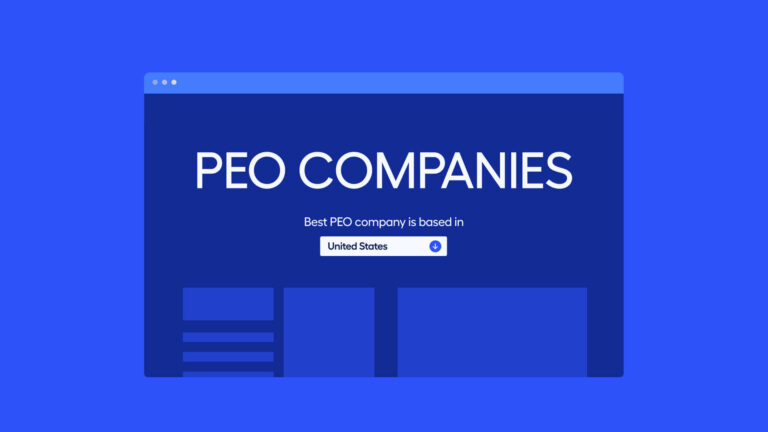Quiet quitting, quiet firing, pay transparency, and the remote work debate. 2022 proved to be quite the rollercoaster, with both employers and employees contending with a landscape that feels anything but settled.
Taking into account various changes, such as the shift to remote and hybrid work, renewed employee expectations, and labor market dynamics, we surveyed our clients, colleagues, and online community to gather 10 predictions set to define the 2023 world of work.
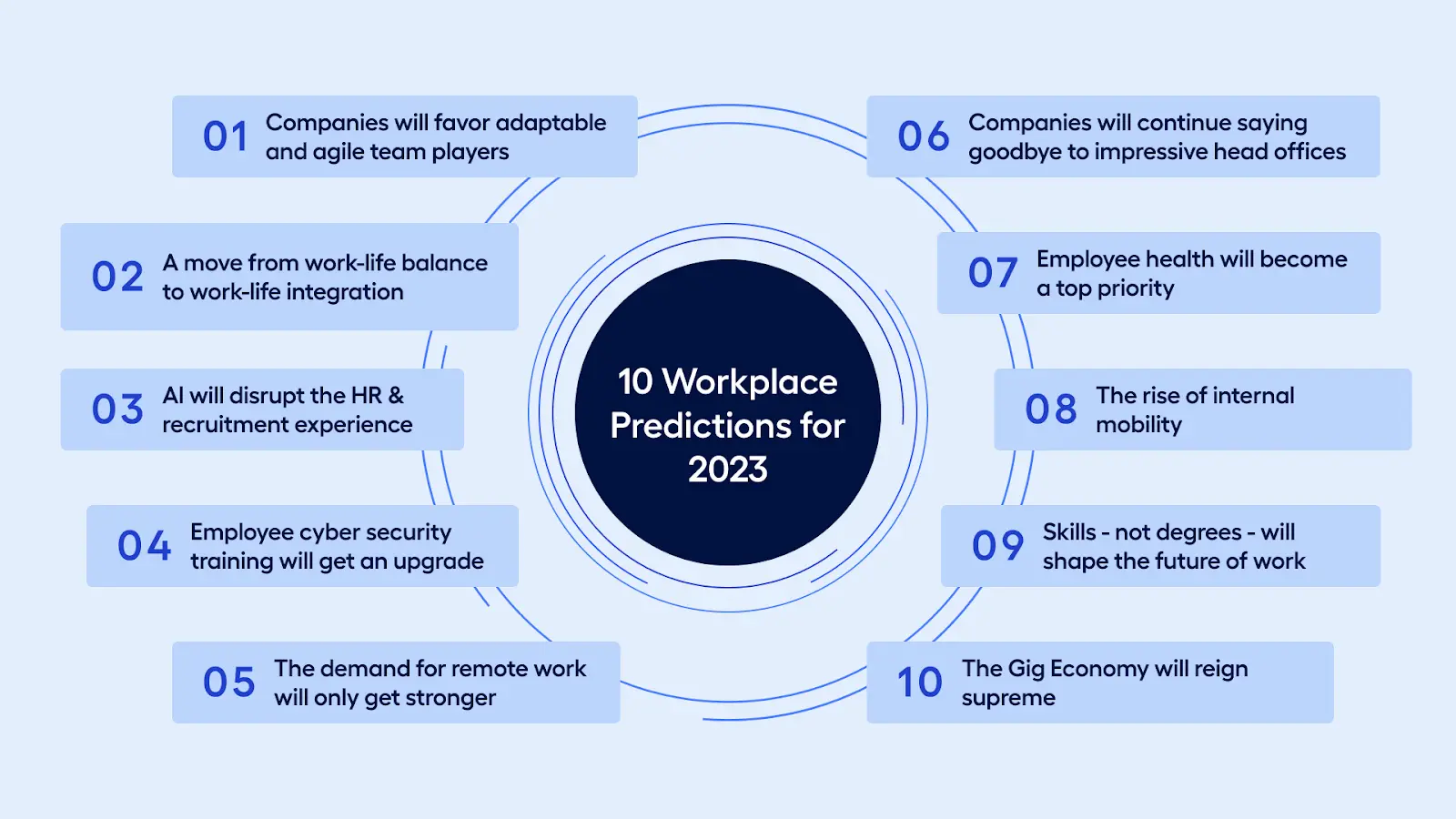
Companies will favor adaptable and agile team players
After battling over two years of financial turbulence, employers will focus on building workforces that are dynamic, agile, and able to weather uncertain times.
Businesses will anticipate 3-4 probable scenarios that may emerge in the subsequent three to four business cycles and create workforce plans that underpin them such as near recession, far out the downturn, short recession, and a prolonged recession.
Taking care of top talent and critical roles will become vital. Businesses will need these people more during a recession than ever.
A move from work-life balance to work-life integration
The aim of cracking a work-life-balance has long been a goal for millions of people the world over. However, the rise of remote work has made it more challenging to achieve, as when employees work from home, the lines can become blurred.
2023 will make way for a rise in employees foregoing the traditional 9-to-5 in favor of a more fluid schedule. We call this the “work-life-integration”; being able to deliver the same output whilst making room for personal responsibilities wherever they arise. For example, working a few hours in the morning, taking a break in the afternoon to pick up the kids from school or to go to the gym before getting back to work in the evening.
The idea of watching the clock has become redundant as managers assess success by the output of employees and not the timeframe of their workday.
AI will disrupt the HR & recruitment experience
In 2023, cognitively advanced AI models will disrupt economies and labor markets. The latest disruptor is ChatGPT, which Bern Elliot, VP Analyst at Gartner, describes as the perfect amalgamation of chatbots and GPTs, creating a “wonderfully intriguing method” of interacting with and producing content that sounds amazingly human.
These interactive bots will alter recruitment activities that are already mundane like cold emailing, generating job descriptions and so on. By reducing the workload, managers will have more time to mentor, offer constructive feedback, motivate, engage, and maintain strong workplace relationships. One compelling use case is regarding recruitment such as outreach, updates and feedback. . We asked ChatGpt to create an email that could be sent by a technical recruiter to a software engineer.
It came up with a human-like response.
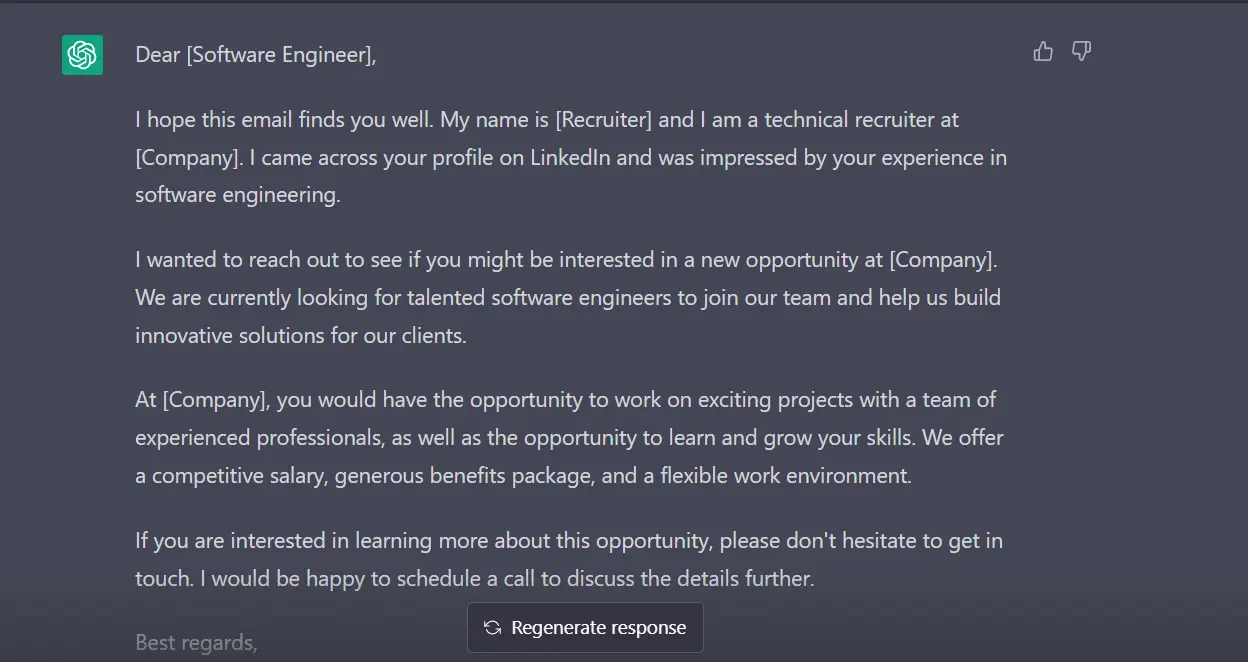
Besides ChatGPT, 2023, we expect HRs to increasingly rely on VR and AR products that combine with AI technology. Breakthroughs in computer vision and Natural Language Processing will continue to impact various aspects of learning, development, and training.
Employee cyber security training will get an upgrade

2023 is expected to be a testing year in cybersecurity resilience for business leaders. In the third quarter of 2022 alone, around 15 million data records were hampered globally, up 37% from the last quarter. Economic uncertainties and global conflicts have already empowered hackers to function in a more organized manner. With the increase in remote employers, employee mobility, connected devices, and a distributed supply chain, many enterprises will face cybersecurity threats in droves.
To address this, companies will focus on increasing their resilience against cyber threats. Training employees on various cybercrimes will become more common. Phishing simulations, cloud security, and training on aspects such as multi-factor authentication will gain even more traction over the next 12 months.
The demand for remote work will only get stronger
In October 2022, LinkedIn found that only one out of seven job postings featured remote work. However, remote jobs garnered more than half of the total job applications. While employees still prefer remote work, a large proportion of employers want their teams back in the office.
To test this theory, we ran a LinkedIn poll which shows an overwhelming preference for remote work. Over 69% of respondents prefer remote work, while 25% prefer hybrid.
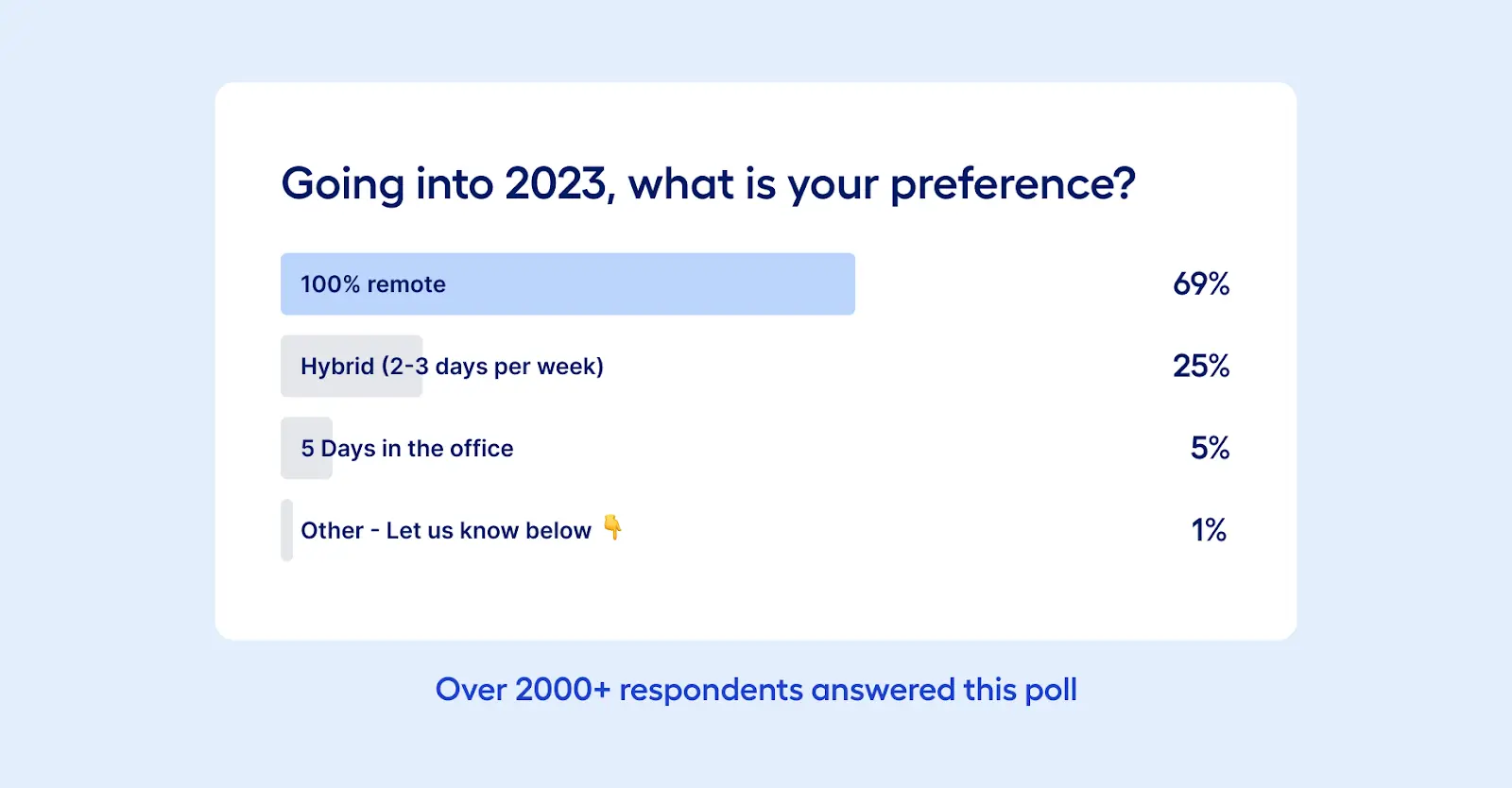
Remote working creates the opportunity to reimagine the workplace and to restructure how we measure productivity and success rather than limiting it to a 9-to-5 office-based presence.
Today, over 74% of the companies in the US have or are planning to shift to a hybrid model. 44% of employees prefer hybrid work and acknowledge that being in the office a few days a week helps boost engagement, overall productivity, and mental well-being.
Companies will continue saying goodbye to impressive head offices

As remote and hybrid working exploded over the last 2-3 years, many companies have already downsized their real estate, with this trajectory predicted to continue in 2023 and beyond.
As companies and employees grow accustomed to hybrid and remote work arrangements, we predict that large, prestigious corporate offices will soon become a rarity.
Researchers predict that the office real estate market in the US may fall by as much as $450 billion by 2029. As an alternative to large HQs, smaller offices and co-working spaces will continue to be relied upon across strategic locations for employees seeking flexibility.
Employee health will become a top priority

Employees have been speaking up about the role work plays on their physical and mental health for a long time. However, 2023 is the year for employers to double down on this area, prioritizing health and wellness for good. A recent study in the UK has noted that poor mental health has been the most significant cause of long-term absence; experienced in 59% of businesses.
In today’s global landscape, businesses must consider diversity, inclusion and the many cultures making up today’s workforce when devising employee wellness and engagement programmes. What works for one demographic may not work for another. Moreover, there is a new generation stepping into the workplace, with higher expectations from employers.
The rise of internal mobility: moving around – but not out
Amid a slowdown in hiring, internal mobility can be a great way to retain key talent. Historically, moving employees internally has been extremely challenging. However, to counter trends like quiet quitting, providing opportunities to move internally with an organization can significantly boost employee morale and can also help in retaining them.
Internal mobility can help employees acquire new skills through on-the-job training while also increasing the chance of a promotion and further development. elop. At a time when training budgets may be toned down, internal transfers can provide employees with the satisfaction of acquiring new skills without the added expenditure.
Skills – not degrees – will shape the future of work
For years, the narrative has been that if you want to go far in life you need to spend the first third of your life acquiring college degrees and qualifications to find the right job. These achievements were perceived to be the ticket for the next two thirds of our journey in building a successful career.
Today, that narrative is changing. If you consider our parents’ careers were likely to include one job for the most part, and compare that with today’s millennial workforce who have forged a reputation for job hopping, it’s understandable why job skills are changing too.
A study published this year by the Burning Glass Institute, observed that there has been a decrease in the number of job postings that required at least a four-year college degree. The study concluded that US employers are shifting their focus from degrees to skills.
This is because technological disruptions happen so often that academic curriculums fail to incorporate new developments. Only timely training and upskilling programs are viable in bridging knowledge gaps for employees. Thus, even for employees with advanced degrees, upskilling and adapting are unsaid prerequisites.
This can also be seen in the freelancing industry. There are nearly 70 million freelancers in the US, and only 35% hold a bachelor’s degree.
The gig economy will reign supreme
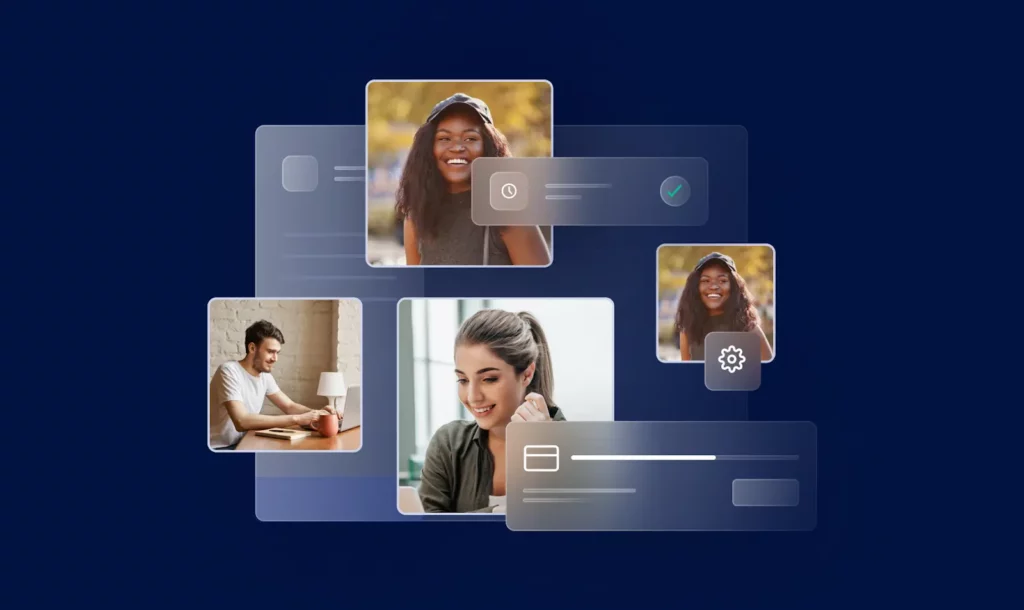
In the past, freelance work was primarily associated with small businesses or self-employed individuals. Now, the increased effectiveness of working with distributed employees has removed many stigmas around hiring freelancers and independent contractors. The gig economy will continue to grow in the coming years, with 80% of large US companies planning to increase their reliance on a freelance workforce.
In 2023, companies will seek to take advantage of the cost savings and flexibility that gig workers can offer. Greater efforts to regulate the gig economy and ensure that gig workers are treated fairly are highly likely. This may involve changes to employment laws, the implementation of new worker protections, or the creation of new gig work-specific regulations.
We can expect to see the emergence of new gig work models that go beyond the traditional “freelance” model. For example, there may be a rise in “gig teams” or “gig collectives,” in which groups of gig workers collaborate on larger projects. We may also see the development of “gig-based” companies, which rely on a mix of permanent employees and gig workers to meet their staffing needs.
To more growth opportunities in 2023
We’d advise employers to strategically plan workforces for the long term and develop human-centric approaches in creating and managing job functions.
To summarize, here are the takeaways:
- The future is not in-office but striking a balance between hybrid and remote work.
- Employee well-being isn’t limited to physical health and Fun Fridays. Offer meaningful work. Pay attention to diversity and inclusion. Embrace pay transparency.
- Communicate the benefits of AI, which can help us do meaningful work.
- Use AI to build systems of collaboration, learning, and growth.
- Shift attention to unconventional talent pools – Rich portfolios, tier-2 universities, freelance talent, and so on.





